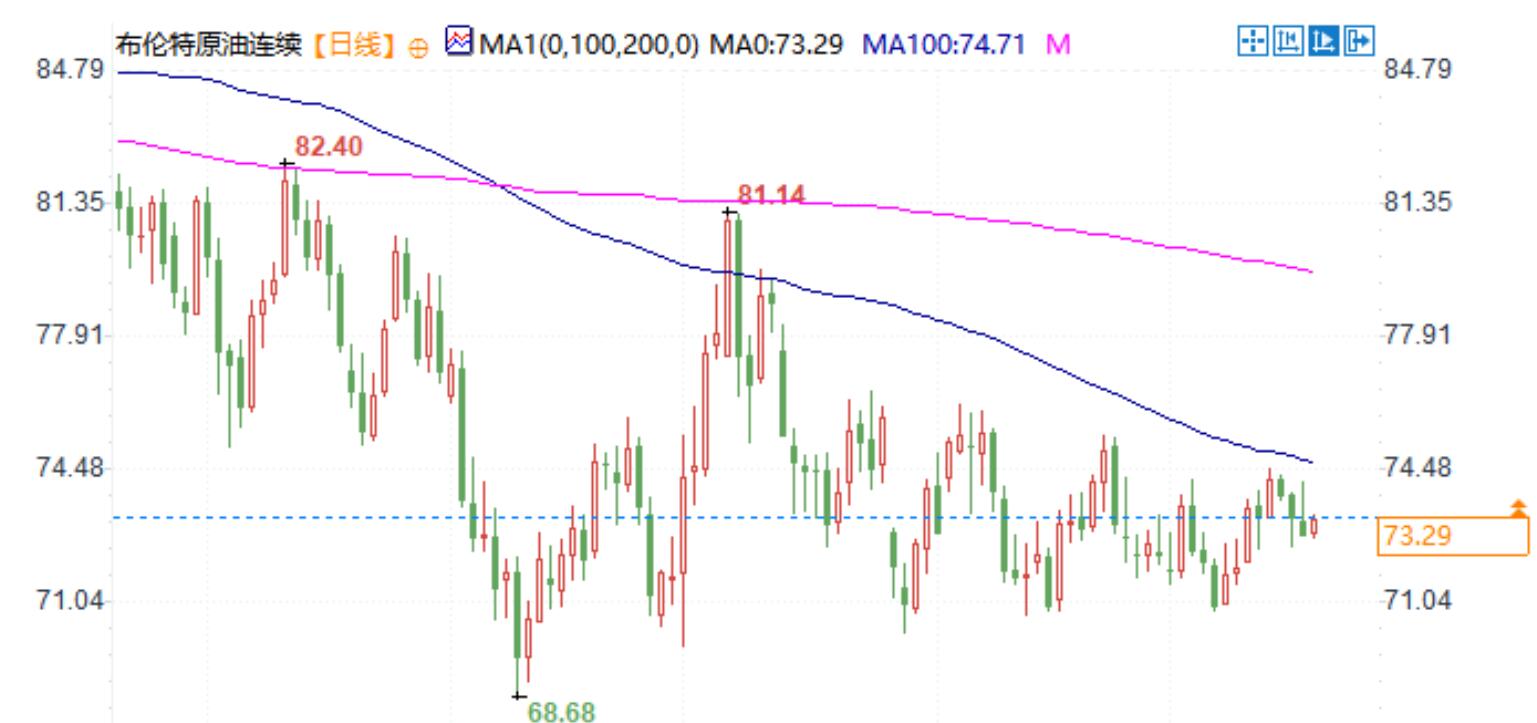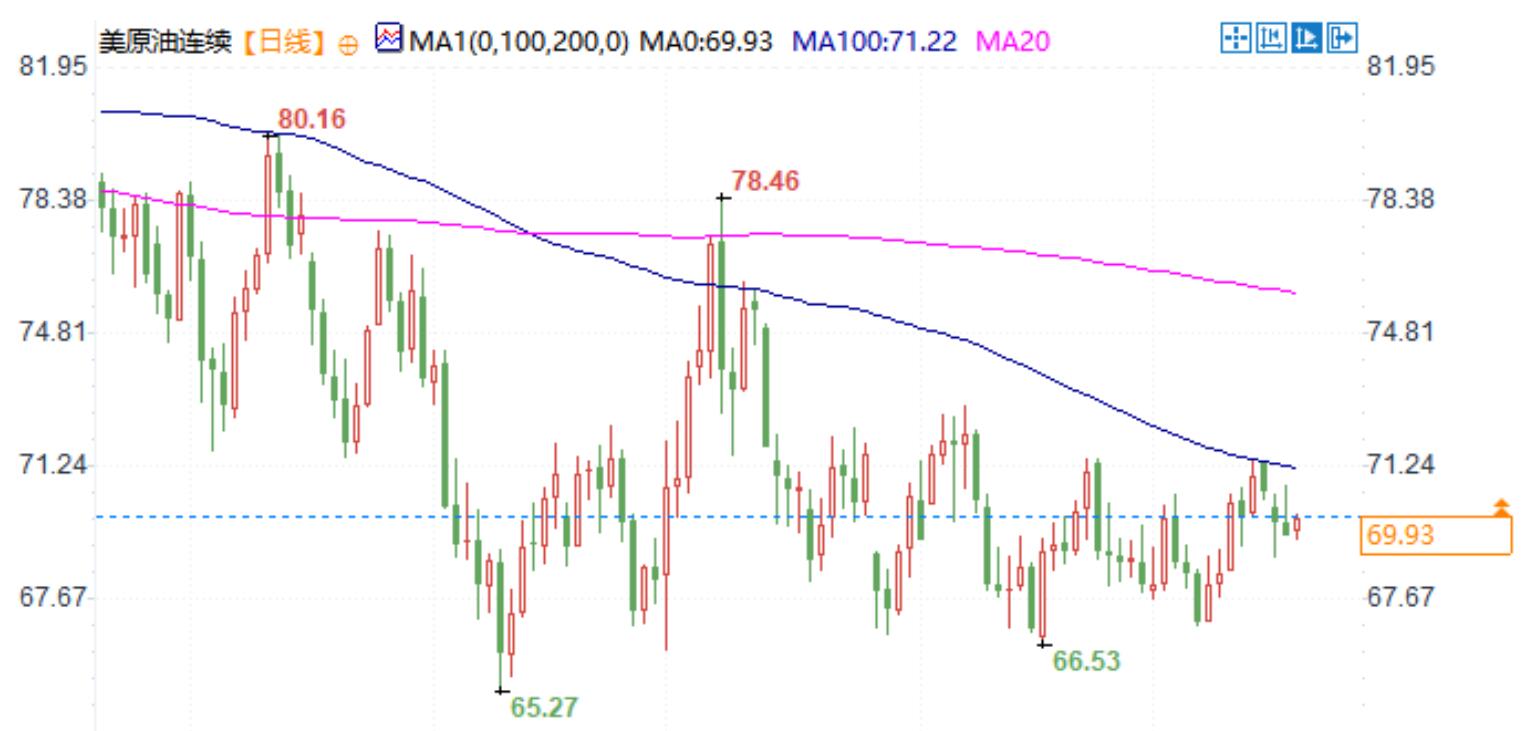Brent crude oil falls, WTI is in turmoil, market turning point has arrived?
On Thursday (December 19th), after the Federal Reserve meeting, crude oil prices experienced a correction, reversing the previous day's upward trend in oil prices, which had previously risen due to a decrease in US crude oil inventories. The policy orientation of the Federal Reserve has shown signals of slowing down the pace of interest rate cuts, intensifying market concerns about slowing economic growth, thereby affecting the trend of oil prices.
The slowdown of Federal Reserve policies affects demand expectations
At the latest interest rate meeting of the Federal Reserve, although the Federal Reserve Board decided to cut interest rates by 25 basis points as scheduled, it also pointed out that there will only be two interest rate cuts in 2025 and lowered its previous expectation of rate cuts. This change indicates that the Federal Reserve may adopt a more cautious monetary policy next year to slow down the intensity of economic stimulus. Due to the fact that interest rate cuts can help reduce borrowing costs, thereby stimulating economic growth and energy demand, market concerns about the slowdown of the Federal Reserve's monetary policy have led to a pullback in the crude oil market.
OANDA market analyst Kelvin Wong pointed out that the Federal Reserve's policy changes mean that liquidity may decrease, which will directly affect the growth of crude oil demand. As economic growth slows down, the expected increase in energy demand will also be suppressed. The recent growth in crude oil demand has been lower than market expectations, especially with weak global demand growth in the first half of 2024. JP Morgan's analysis points out that as of December, global crude oil demand growth was about 200000 barrels per day lower than expected, and the demand growth in December was even 700000 barrels per day lower than expected.
Supply and demand pressures are gradually emerging, and market expectations remain weak
The pressure of supply-demand balance continues to plague the crude oil market. Although OPEC+continues to maintain production restrictions in an attempt to balance the market, some analysts believe that even so, there may still be a situation of oversupply in the market. Suvro Sarkar, head of DBS Bank's energy department, stated that although OPEC+'s production cuts have continued, the expectation of global crude oil demand growth exceeding 1 million barrels per day by 2025 seems overly optimistic. As economic growth slows down, the rate of demand growth may fall far short of market expectations.
In terms of inventory, although US crude oil inventories have decreased, the magnitude of the decline is lower than market expectations. According to data from the US Energy Information Administration (EIA), as of the week ending December 13th, US crude oil inventories decreased by 934000 barrels, lower than analysts' expectations of a 1.6 million barrel decline. Despite the lower than expected decline, the market still found support from inventory data. The significant increase in US crude oil exports reached 4.89 million barrels per day, an increase of 1.8 million barrels per day, providing short-term support for oil prices. However, the overall demand situation is still quite severe.
Technical analysis
From a technical perspective, both Brent crude oil and WTI crude oil have experienced a pullback after their recent gains, and are facing certain technical pressures in the short term. Brent crude oil has fallen below the support level of $73 and is currently facing a strong pressure zone around $74. If the region cannot be effectively broken through, Brent crude oil may continue to fall back to around $70. WTI crude oil is oscillating around the support level of $70, and if it breaks this support level, it may further test the support strength of the $67 line.


Future Trends and Prospects
Looking ahead, the fundamentals of the crude oil market still face significant uncertainty. The Federal Reserve's slowing pace of interest rate cuts may continue to suppress demand expectations, especially against the backdrop of a global economic slowdown in 2025. The pressure of supply-demand imbalance may gradually emerge, and although the OPEC+production reduction agreement will continue to provide support for oil prices, the overall market may still be in a state of oversupply. In the short term, crude oil prices may continue to fluctuate and consolidate, and prices may fluctuate within a certain range, especially under the dual pressure of a strong US dollar and slowing economic growth.
Overall, the crude oil market will face more adjustment pressure in the face of uncertain demand prospects. Investors need to pay attention to global economic trends, especially the Federal Reserve's monetary policy changes and their impact on demand. Meanwhile, the policy trends of OPEC+and changes in US crude oil inventories will also be the focus of market attention.
At the time of writing this article, Brent crude oil and WTI crude oil fell by 0.4% and 0.6% respectively. Brent crude oil was reported at $73.12 per barrel, while WTI crude oil was reported at $70.19 per barrel.
Tips:This page came from Internet, which is not standing for FXCUE opinions of this website.
Statement:Contact us if the content violates the law or your rights
